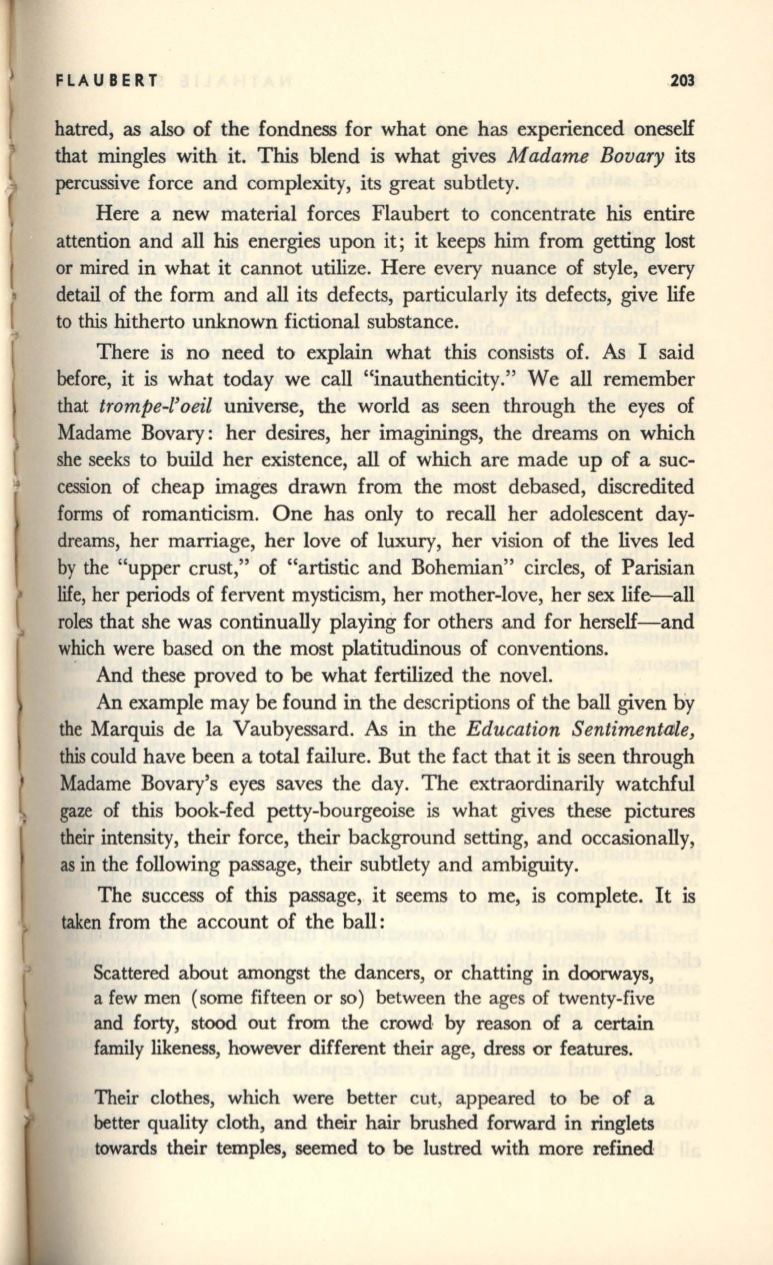
FlAUBERT
203
hatred, as also of the fondness for what one has experienced oneself
that mingles with it. This blend is what gives
Madame Bouary
its
percussive force and complexity, its great subtlety.
Here a new material forces Flaubert to concentrate
his
entire
attention and all
his
energies upon it; it keeps him from getting lost
or mired in what it cannot utilize. Here every nuance of style, every
detail of the form and all its defects, particularly its defects, give life
to this hitherto unknown fictional substance.
There is no need to explain what this consists of.
As
I said
before, it is what today we call "inauthenticity." We all remember
that
trompe-l'oeil
universe, the world as seen through the eyes of
Madame Bovary: her desires, her imaginings, the dreams on which
she seeks to build her existence, all of which are made up of a suc–
cession of cheap images drawn from the most debased, discredited
fonns of romanticism. One has only to recall her adolescent day–
dreams, her marriage, her love of luxury, her vision of the lives led
by
the "upper crust," of "artistic and Bohemian" circles, of Parisian
life, her periods of fervent mysticism, her mother-love, her sex life-all
roles that she was continually playing for others and for herself-and
which were based on the most platitudinous of conventions.
And these proved to be what fertilized the novel.
An
example may be found in the descriptions of the ball given by
the Marquis de la Vaubyessard.
As
in the
Education Sentimentale,
this
could have been a total failure. But the fact that it is seen through
Madame Bovary's eyes saves the day. The extraordinarily watchful
gaze of this book-fed petty-bourgeoise is what gives these pictures
their intensity, their force, their background setting, and occasionally,
as
in the following passage, their subtlety and ambiguity.
The success of this passage, it seems to me, is complete. It is
taken from the account of the ball:
Scattered about amongst the dancers, or chatting in doorways,
a few men (some fifteen or so) between the ages of twenty-five
and forty, stood out from the crowd by reason of a certain
family likeness, however different their age, dress or features.
Their clothes, which were better cut, appeared to be of a
better quality cloth, and their hair brushed forward in ringlets
towards their temples, seemed to
be
lustred with more refined


